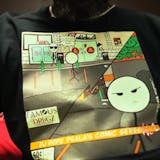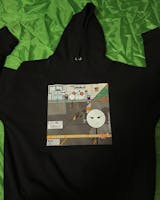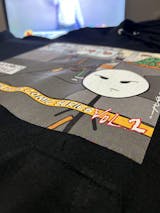DTF printing technology plays an important role in producing successful printed products. With this technology, which means direct to film, new developments have begun to occur in the special garment printing industry. The most important of these developments is the ability to print higher quality and more detailed designs.
Custom DTF printing consists of many stages. The first stage is to create a digital design. Digital designs can be drawn manually through a drawing program or created using different design programs. It is necessary to ensure that the designs are suitable for printing and that they are high resolution. Compared to traditional printing types, DTF printing technology allows for much more freedom in design. The techniques involved in traditional printing methods limited the designs considerably. However, thanks to printing technologies combined with digital design, original and high quality designs are made.
The designs are transferred to transfer films called custom gang sheet or transfer films. The designs transferred to these films using special inks are ready for printing. These inks, specially designed for DTF printers, are both permanent and have very vibrant colors. It is important that these designs transferred onto pet films are mirrored versions. Because when they are transferred to the fabric, the reverse version of the image appearing in the film will be transferred to the fabric.
DTF Printing Fabric Selection and Printing Stage
The fabrics chosen for DTF transfer are important. These fabrics must be suitable for DTF printing. The ink used should adhere to the fabric and spread evenly. If fabrics that absorb ink better and maintain color vibrancy are selected, color vibrancy and washing resistance will increase. To increase this resistance, special solutions can be applied to the fabric.
A special hot-melting powder is applied to the film on which the design is transferred. Sometimes this is not necessary. Pre pressing the fabric is important in DTF printing systems. Heat press is applied to the fabric and checked to ensure that the design to be transferred is transferred to the fabric correctly. The fabric must be kept flat while printing. The results of printing processes applied to fabrics that are wrinkled or not flat will not be efficient.
One of the most important steps in custom heat transfer technology is the moment when the print is transferred to the fabric. A special powder is used to increase the durability between the film and the fabric. Film with melted powder applied is placed neatly on the fabric before heat pressing. In order for the film to adhere firmly to the fabric, the process is carried out for approximately 20 seconds at a temperature of 160-170 degrees. Since the fabric and transfer film are still hot after the heat press process, they must first be allowed to cool. The film is then slowly separated from the fabric. It is necessary to wait for this film and fabric to cool at room temperature.
What Should Be Done After the Printing?
Optional applications are available after printing and cold peeling in DTF printing technology. The fabric on which the design is transferred can be pressed for 10-15 seconds after printing. This way the ink adheres better to the fabric. In the final stage, the quality and accuracy of the design on the fabric is checked. If there is any problem, it can be corrected or a new printing can be made.
DTF transfer technology is not only used in the clothing industry. Thanks to this printing technology, which can also be used for decoration and accessories, it is possible to print in any industry. This printing technology can be easily used in product promotions, uniforms and some decoration products.








